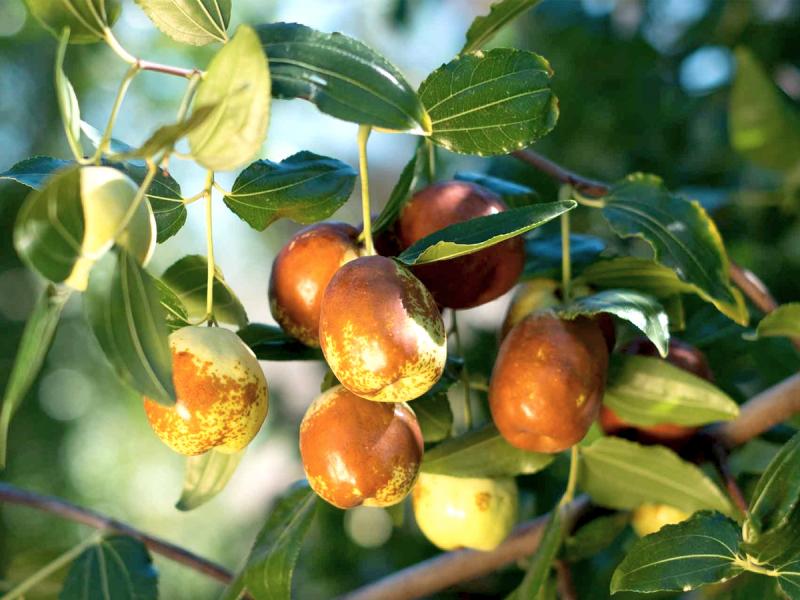Mincemeat, a cloyingly sweet mix of dried fruits and the bane of many dessert tables, once upon a time had meat in it. Marshmallows were originally made from the roots of a flower that grew in the wetlands, the “marsh mallow,” though today marshmallows are little more than corn syrup.
Then there are Jujubes, the gummy candies made famous at movie theater concessions, and dentist offices when they literally pulled fillings out of kids’ mouths. The jujube candy was once made from the juice of the jujube fruit, a naturally sweet, date-like dried fruit from the jujube tree (Zizyphus jujuba).
Original jujube candy made with real jujube juice was used to treat coughs and chest complaints. They became very popular as theater treats because moviegoers didn't want to cough during the show and disturb the audience.
The real jujube grows on trees from China, where it has been cultivated for more than 4,000 years. The round- to oblong-shaped fruits are about an inch or two long with thin, edible skin and sweet white flesh surrounding a single seed. When ripe, the fruits are solid red and look almost like dates, with an apple taste. Many people prefer the fruit when it is not fully ripe and the light-green fruit dotted in red is still firm and crisp.
Jujube likes hot summers to fully ripen, but even during cool summers you can pick the fruits half ripe and finish ripening them indoors. The trees are hardy in USDA Zones 6-10, so they grow well in Delaware. The trees are quite attractive, with gray bark and stunning yellow fall foliage.
Jujube trees are partially self-fertile, though you will get better yields by cross-pollinating with another variety. There are many named varietals or cultivars of jujube. One of the most popular is Li Jujube, which produces big, round fruit that can weigh up to three ounces each. Lang Jujube is another popular cultivar that produces large fruit with a distinctive pear shape. Lang jujubes taste best dried.
Plant jujube trees in any well-drained soil in full sun. Once established, jujube trees are very drought tolerant, although steady watering will give bigger crops. Jujube grows in almost any soil and any pH without fertilizer. For best production, fertilize with a fruit-tree fertilizer once the tree is a few years old. Jujube often grows suckers from the roots that need to be cut out at or below the soil level.
To eat jujube fresh, pick them while the fruit is firm, like an apple. For varieties such as Lang, which tastes best dried, let the fruit dry on the tree until it turns red and the skin wrinkles.
Substitute fresh, crisp jujubes in any recipe that uses apples. Slice them and add to salads, or just eat them out of hand. Use dried jujubes to replace dates or raisins in recipes. You can even make jujube tea.
Jujube and jujube seeds are used in Chinese medicine to treat insomnia. Jujube fruit and seeds contain high amounts of saponin, which acts as a natural sedative, relaxing your entire nervous system. Jujube fruits are high in vitamin C and antioxidants that block damage caused by free radicals, such as accelerated aging, heart disease and even cancer.
So plant a few jujube trees aand sit back and enjoy the stunning fall foliage. In a few years, you can go to a movie while gnawing on your homegrown jujubes. No dental work required.























































